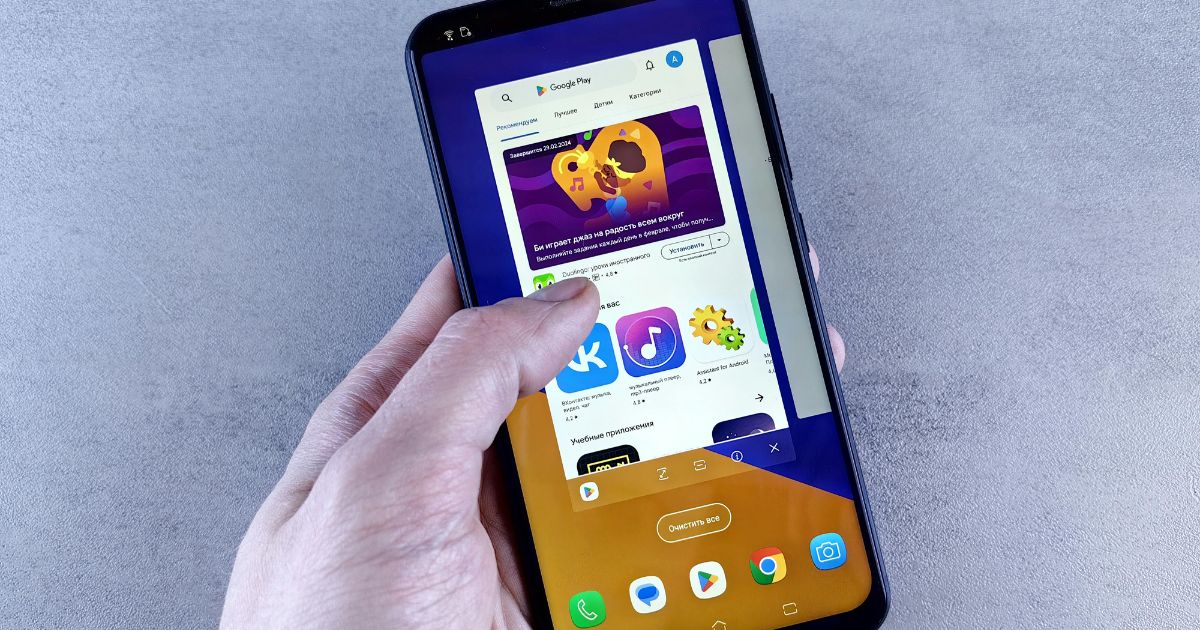The Internet of Things (IoT) is transforming the way we interact with the world around us. By connecting everyday devices to the Internet, IoT allows for seamless communication between machines, systems, and people. As more industries embrace IoT, integrating these connected devices with mobile apps has become crucial for providing users with intuitive, real-time control and monitoring.
In this article, we’ll explore how IoT app development integrates with mobile applications, highlighting the benefits, challenges, and opportunities this integration offers businesses and end-users.
What is an IoT Network?
An IoT network refers to a system of interconnected devices embedded with sensors, software, and other technologies that enable them to communicate and exchange data over the Internet. These devices, often referred to as "smart devices", range from household appliances and wearables to industrial machinery and infrastructure components.
The network operates by collecting data from the devices, transmitting it through communication protocols like Wi-Fi, Bluetooth, or Zigbee, and processing it on a cloud or edge computing platform. This system allows devices to interact with each other or with centralized systems, creating an ecosystem of seamless connectivity and data sharing.
In Software Development, What Role Does IOT Play?
Within software development, IoT is considered a transformative paradigm that extends the digital realm into the physical world. It involves creating applications that enable devices embedded with sensors, actuators, and connectivity modules to communicate, collect, and process data.
IoT software development focuses on building platforms, protocols, and interfaces to manage these devices and the data they generate. This includes designing robust backend systems for data storage and analysis, developing user-friendly mobile and web applications for interaction, and ensuring secure communication across networks.
IoT development bridges hardware and software, requiring expertise in embedded systems, cloud computing, and data management.
What is the Relationship Between IoT and Big Data?
The relationship between IoT and big data is deeply intertwined, as IoT serves as a major driver of big data. IoT devices, equipped with sensors and connectivity, continuously generate vast amounts of data from various sources such as homes, vehicles, industries, and cities. This data encompasses everything from temperature readings and GPS coordinates to machine performance metrics and user behavior patterns.
Big data technologies, in turn, are used to store, process, and analyze the enormous volume of information generated by IoT networks. These technologies include scalable storage solutions like cloud platforms, real-time data processing frameworks, and advanced analytics tools powered by machine learning.
The insights derived from IoT-generated big data enable improved decision-making, predictive maintenance, personalized user experiences, and the optimization of systems and processes.
In essence, IoT creates the data, and big data technologies transform it into actionable knowledge, forming a symbiotic relationship between the two.
Which Industries Can Utilize IoT App Development?
IoT app development is a versatile technology that transforms industries by enhancing efficiency, enabling data-driven decision-making, and improving user experiences. Here are some of the industries in which it can and is already being used in.
Healthcare
IoT is revolutionizing healthcare by enabling remote monitoring, real-time data collection, and seamless communication between devices. Wearables like smartwatches and fitness trackers monitor vital signs such as heart rate, blood pressure, and oxygen levels, sending data to healthcare providers for early diagnosis or ongoing treatment.
IoT-integrated mobile apps can track chronic conditions, remind patients to take medications, or notify caregivers of emergencies.
Hospitals use IoT for asset tracking, monitoring patient vitals in real time, and optimizing workflows to enhance patient care.
From personalized medicine to predictive analytics, IoT ensures efficient, data-driven healthcare services.
Logistics
IoT streamlines logistics by enhancing real-time tracking and operational efficiency. Mobile apps connected to IoT devices monitor shipment locations, temperature, and humidity levels in real time, ensuring sensitive goods like pharmaceuticals or perishables remain intact.
Sensors installed in vehicles and warehouses collect data on fuel usage, driver behavior, and storage conditions.
IoT-powered fleet management systems optimize routes, reduce delays, and minimize operational costs.
Mobile apps enable stakeholders to track shipments, access predictive maintenance insights, and automate processes, ensuring transparency and reliability throughout the supply chain.
Agriculture
IoT app development is transforming agriculture through precision farming and resource optimization.
IoT sensors placed in fields monitor soil moisture, temperature, and nutrient levels, transmitting data to mobile apps for actionable insights. Farmers can adjust irrigation systems remotely to conserve water, apply fertilizers with precision, and predict weather patterns for better crop planning. Drones equipped with IoT sensors survey fields to assess crop health, identifying areas requiring intervention. Livestock tracking using IoT collars provides real-time health and location updates, enhancing productivity.
In this way, mobile apps act as a central hub for managing farm activities, improving efficiency and yields.
Smart Homes
IoT app development is the cornerstone of smart home technology, enabling automation, security, and convenience. Mobile apps allow users to control smart devices like thermostats, lights, and security cameras remotely. IoT sensors detect unusual activities, alerting homeowners about potential threats. Voice assistants integrated with IoT devices enhance usability by enabling hands-free commands. Smart appliances, such as refrigerators and washing machines, can notify users of maintenance needs or integrate with shopping apps for replenishment.
Therefore, IoT-driven mobile apps provide homeowners with insights into energy consumption, enabling cost savings and environmental benefits while delivering a seamless living experience.
Supply Chain Management
IoT enhances supply chain management by providing end-to-end visibility and operational control. IoT-enabled sensors track products during transportation, monitoring environmental conditions such as temperature, humidity, and vibration to ensure quality.
Mobile apps provide real-time updates on inventory levels, helping businesses avoid stockouts or overstocking.
Predictive analytics powered by IoT data identifies bottlenecks and optimizes workflows.
Blockchain technology combined with IoT ensures traceability, preventing fraud and maintaining accountability.
With mobile apps as a control center, stakeholders gain actionable insights and can quickly respond to disruptions, ensuring smoother and more efficient supply chain operations.
Environmental Monitoring
IoT is a game-changer for environmental monitoring, providing tools to measure and mitigate the impact of human activities.
IoT sensors monitor air and water quality, noise levels, and temperature fluctuations, transmitting data to mobile apps for real-time analysis. Governments and organizations use these insights to enforce regulations, plan urban developments, or address environmental concerns. IoT-connected weather stations track microclimates, aiding disaster preparedness. Mobile apps empower users to access this data, make informed decisions, or participate in citizen science initiatives.
By integrating IoT into environmental monitoring, stakeholders can protect ecosystems and ensure sustainable resource management.
IoT Examples in Mobile Apps
Here are three examples of apps that highlight how IoT integration can transform various domains, from home automation and transportation to healthcare.
1. Philips Hue
The Philips Hue app exemplifies IoT integration in smart lighting systems. It connects with IoT-enabled smart bulbs and light fixtures, allowing users to control lighting through their smartphones.
Users can adjust brightness, color, and scheduling remotely or via voice commands through virtual assistants like Alexa, Google Assistant, or Siri.
The app’s integration with IoT also allows automation, such as syncing lights to music or setting them to turn on automatically when someone enters a room.
This seamless interaction between the app and IoT devices offers convenience and energy efficiency while personalizing home environments.
2. Tesla Mobile App
Tesla’s mobile app showcases IoT in the automotive sector, providing remote control and monitoring of Tesla vehicles. Through the app, users can check their car's battery status, pre-condition the cabin temperature, and lock or unlock doors remotely.
The app communicates with the car's IoT-enabled systems to offer real-time updates on location, charging status, and maintenance needs.
Integration with Tesla’s energy products, like Powerwall, allows users to manage home energy consumption in tandem with their vehicles.
This app exemplifies how IoT enhances user experiences by creating a connected ecosystem for vehicles and energy management.
3. mySugr
The mySugr app integrates IoT for health monitoring, specifically for diabetes management. It syncs with IoT-enabled glucometers to automatically log blood sugar readings.
Users can track their glucose levels, set reminders for testing, and share data with healthcare providers.
The app provides insights into patterns, helping users manage their condition more effectively.
Its IoT integration eliminates the need for manual data entry, enhances accuracy, and empowers users with actionable health insights.
Should I Enable IoT Onboarding?
The integration of IoT in app onboarding can offer significant benefits, particularly for apps that interact with connected devices. However, its suitability depends on the app's purpose and the target audience.
Here are some benefits to keep in mind when choosing whether IoT should be integrated in the onboarding process.
- Simplified device setup: guides users through pairing IoT devices with the app during the onboarding process. This reduces confusion by automating or simplifying device configuration.
- Immediate user value: allows users to experience the app's core features and benefits right from the start. This will demonstrate real-time functionality, such as device monitoring or automation.
- Personalized experiences: collects data from connected IoT devices to tailor the onboarding process. Therefore, it is able to offer customized features or settings based on user behavior and preferences.
- Improved user retention: minimizes technical issues by ensuring devices are set up correctly during onboarding. This encourages continued app use by providing a positive first experience.
- Enhanced customer satisfaction: reduces frustration by streamlining the onboarding experience, which builds trust by showcasing the app’s reliability and value.
When choosing whether or not this implementation is right for an app, businesses should assess their app's core functions and audience needs. Apps tied to physical IoT devices, like wearables or smart appliances, are natural candidates. However, for apps that don’t rely on connected devices, IoT onboarding may complicate the process unnecessarily.
Conducting user research and prototyping IoT onboarding workflows can help businesses gauge whether this feature adds value. If integrating IoT enhances the user experience and aligns with the app’s functionality, it’s a worthwhile investment. Otherwise, focusing on a streamlined, non-IoT onboarding process may be more effective.
What is an IoT Developer Responsible for?
An IoT developer plays a crucial role in designing, developing, and maintaining systems that enable devices to connect and communicate within the Internet of Things’ ecosystem. Their responsibilities include the following.
- Device integration: developers are responsible for ensuring IoT devices can interact seamlessly with mobile apps, cloud platforms, and other systems. They write firmware and software to enable reliable device connectivity, ensuring devices function correctly within the broader IoT ecosystem.
- Connectivity protocols: IoT developers implement communication standards such as Bluetooth, Wi-Fi, Zigbee, or MQTT to ensure secure and efficient data transfer between devices. They also troubleshoot connectivity issues, ensuring devices communicate effectively with each other and external systems.
- Data management: developers design systems to collect, store, and process the large volumes of data generated by IoT devices. This includes implementing data analytics tools to extract meaningful insights from the data, helping businesses make informed decisions based on real-time information.
- Security: ensuring the security of IoT systems is a critical responsibility. Developers are tasked with creating robust security measures to protect both data and devices from potential breaches. They implement encryption, access controls, and other strategies to prevent unauthorized access to sensitive information.
- System scalability: developers build scalable architectures to support the growing number of connected devices. They test the system’s performance to ensure it can handle increasing loads as more devices are added to the network, maintaining reliability and efficiency.
- User interface development: IoT developers create user-friendly interfaces that allow individuals to interact with IoT systems through mobile apps or dashboards. These interfaces are designed to be intuitive, allowing users to easily control and monitor connected devices.
Choosing an IoT App Development Company
When choosing an IoT app development partner, it’s essential to consider several key factors to ensure a successful collaboration. First, look for expertise and experience in IoT development. The partner should have a proven track record in building scalable, secure IoT solutions across various industries. Technical proficiency is crucial, so ensure they are well-versed in the latest connectivity protocols, data management systems, and security measures needed for IoT apps.
Next, assess their understanding of your business needs. A good partner will take the time to understand your specific goals and challenges, tailoring their solutions accordingly. Look for a partner with strong communication and collaboration skills, as successful IoT app development requires continuous interaction and feedback.
Finally, consider their ability to support ongoing maintenance and updates. IoT apps often require updates due to evolving technologies, so it’s important that your partner offers long-term support and scalability.
At AppIt, we specialize in developing custom apps that align with your business needs. With our expert team and commitment to delivering high-quality, secure, and scalable solutions, we’re ready to bring your IoT vision to life.
Contact us today to get started on your IoT development journey!








